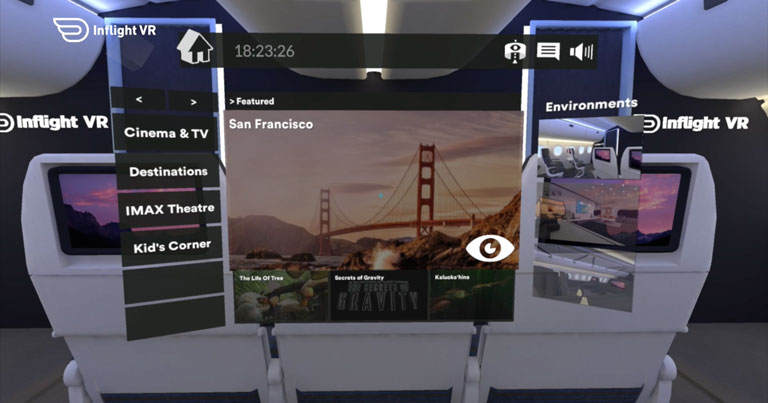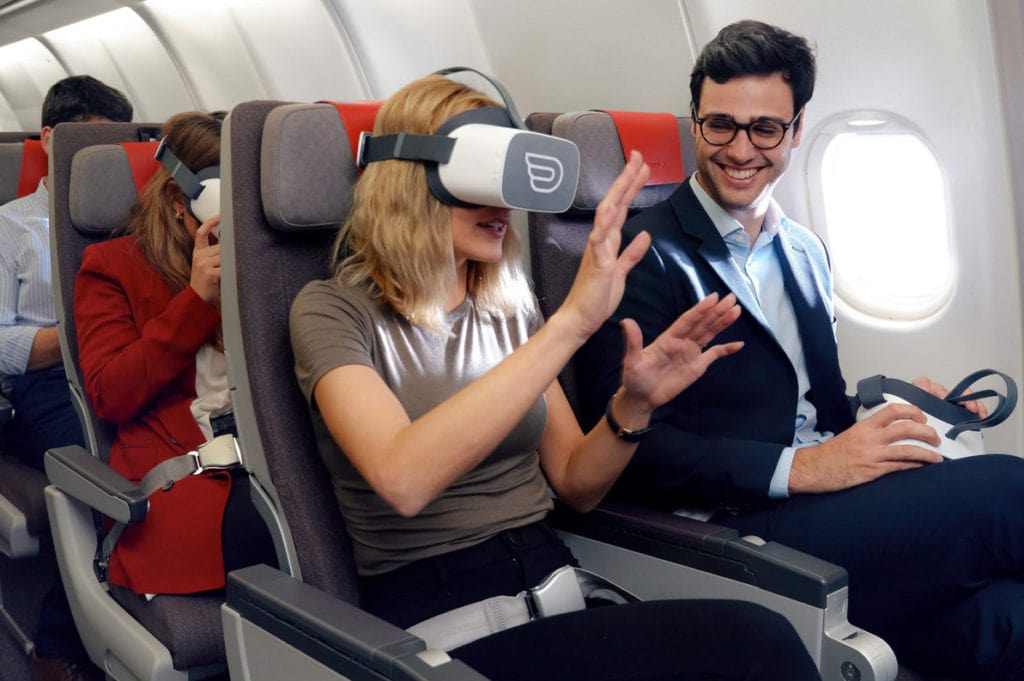As air travel becomes more technologically advanced, airlines are turning to virtual reality (VR) to elevate the passenger experience. VR in-flight entertainment systems offer a fully immersive escape—transforming long, cramped flights into engaging journeys filled with 360° movies, interactive games, and virtual tours of exotic destinations.
What Is VR In-Flight Entertainment?
VR in-flight entertainment allows passengers to wear lightweight headsets and experience immersive content during the flight. Unlike traditional seatback screens, VR provides a 360-degree environment that can simulate anything from underwater exploration to walking on Mars—all from your airplane seat.

Benefits of VR Entertainment at 30,000 Feet
1. Immersive Distraction from Flight Discomfort
VR helps passengers forget about limited legroom and turbulence by fully immersing them in alternate environments.
2. Expanded Entertainment Options
From VR films to interactive story-driven games and mindfulness sessions, the content options are growing rapidly.
3. Reduced Motion Sickness
Contrary to assumptions, studies show VR systems optimized for air travel may help reduce motion discomfort rather than increase it.
4. In-Flight Learning and Exploration
Passengers can learn languages, tour their destination, or explore the inner workings of aircraft—all in 3D.

Airlines Embracing VR Technology
Some carriers already experimenting or offering VR include:
- Qatar Airways: First-class passengers on select flights enjoy VR headsets.
- Lufthansa: Has tested VR entertainment as a premium offering.
- XL Airways (France): Previously offered SkyLights’ Cinemask VR headsets.
- Emirates: Introduced VR seat previews and exploring cabin layouts.
Challenges to Widespread Adoption
- Sanitation: Ensuring hygiene between uses is a top concern.
- Battery Life and Charging: Long flights require long-lasting devices.
- Headset Comfort: Headsets must be light, adjustable, and user-friendly.
The Future of VR in Air Travel
As VR headsets become smaller, more affordable, and easier to sanitize, expect broader adoption across both premium and economy cabins. Airlines may also integrate mixed reality features—like virtual windows or AR navigation—into seat environments.
Conclusion
VR in-flight entertainment is redefining how we experience air travel. From cinematic immersion to interactive escapism, it’s setting the stage for a more engaging and personalized journey. The sky is no longer the limit—it’s just the beginning.


